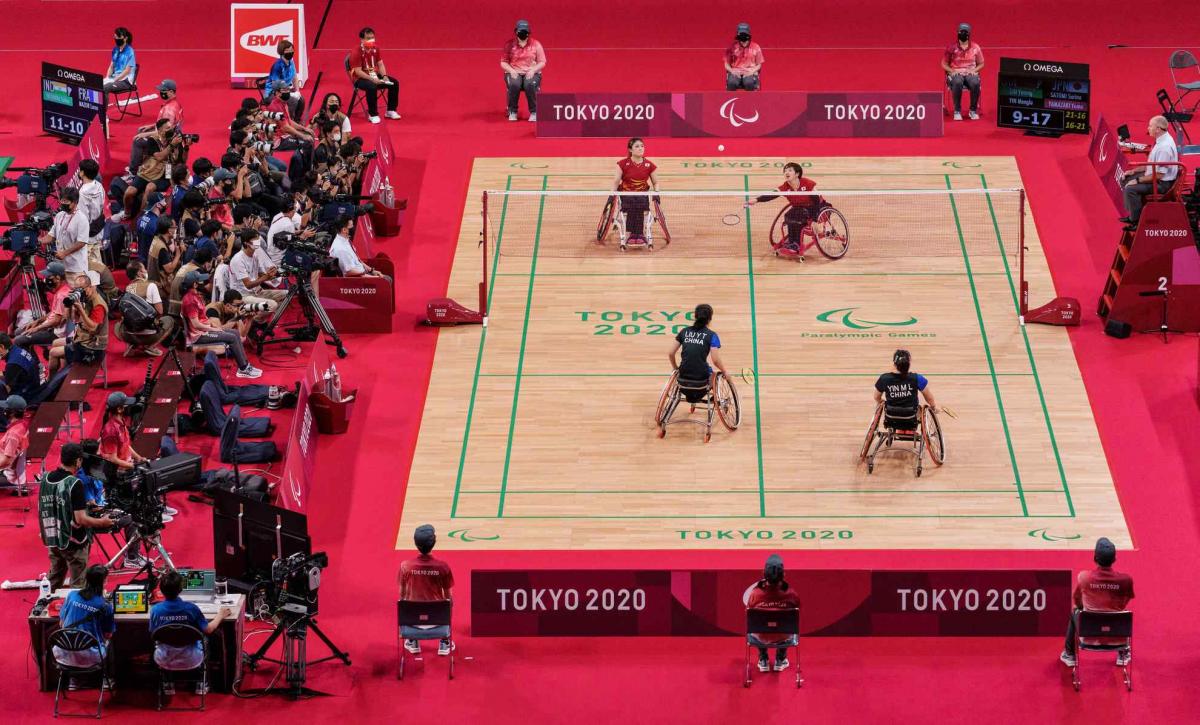Olomouc GP: All you need to know about the historic women's Grand Prix
‘Air baths’ and adrenaline rushes: Tyler Turner’s summer training
IPC Athletes' Forum 2025 concludes with strong global participation
IPC Campus inaugurated among athletes and officials
Find out about the Milano Cortina 2026 Art Posters
Games News
View moreGeneral News
View moreAbout the Paralympic Games
The Paralympic Games are the largest global sporting event for athletes with disabilities and have taken place every four years since the inaugural edition in Rome, Italy, in 1960. In 1976, the first Winter Games were held in Ornskoldsvik, Sweden and featured 198 athletes from 16 countries.
Following the 1988 Games in Seoul, Republic of Korea, and the Winter Games in Albertville, France in 1992, the Paralympic and Olympic Games have been held in the same city. The next Paralympic Games will be held in LA in 2028 followed by Brisbane in 2032. The next winter edition is Milano Cortina 2026 with the French Alps to follow in 2030 and Salt Lake City in 2034.
About the IPC
The International Paralympic Committee (IPC) is the global governing body of the Paralympic Movement. Founded on 22 September 1989 as a non-profit organisation, we aim to be athlete-centred and membership-focussed in all our endeavours.
Through partnerships with more than 200 member organisations, we leverage Para sport to advance the lives of the 1.2 billion individuals with disabilities across the globe.
Paralympics history
Sport for athletes with an impairment has existed for more than 100 years. It was not until after World War II, however, that it was widely introduced. The purpose of it at that time was to assist the large number of war veterans and civilians who had been injured during wartime.
On 29 July 1948, the day of the Opening Ceremony of the London 1948 Olympic Games, Dr. Ludwig Guttmann organised a competition for wheelchair athletes at the Stoke Mandeville Hospital in Great Britain. Sixteen injured servicemen and women took part in archery at the inaugural Stoke Mandeville Games, which later became the Paralympic Games.
What is classification?
Classification is the cornerstone of the Paralympic Movement; it determines which athletes are eligible to compete in a sport and how athletes are grouped together for competition. In Para sports, athletes are grouped by the degree of activity limitation resulting from the impairment. This, to a certain extent, is similar to grouping athletes by age, gender or weight.
Classification aims to minimise the impact of the impairment on athletes' performance so that the sporting excellence determines which athlete or team is ultimately victorious. Ensuring that athletes are classified prior to competing is crucial to safeguarding the integrity and credibility of the competition.
What are the Paralympic sports?
The International Paralympic Committee (IPC) recognises a total of 28 Paralympic sports. The 22 summer sports are Para archery, Para athletics, Para badminton, blind football, boccia, Para canoe, Para cycling, Para equestrian, goalball, Para judo, Para powerlifting, Para rowing, shooting Para sport, sitting volleyball, Para swimming, Para table tennis, Para taekwondo, Para triathlon, wheelchair basketball, wheelchair fencing, wheelchair rugby, and wheelchair tennis.
Winter sports include Para alpine skiing, Para biathlon, Para cross-country skiing, Para ice hockey, Para snowboard, and wheelchair curling.

















































